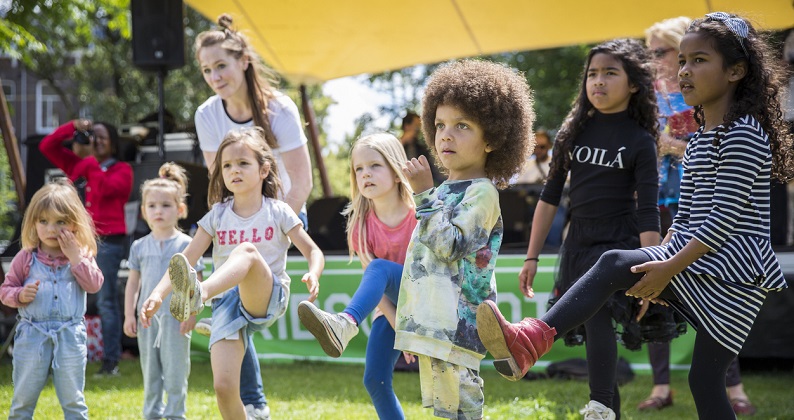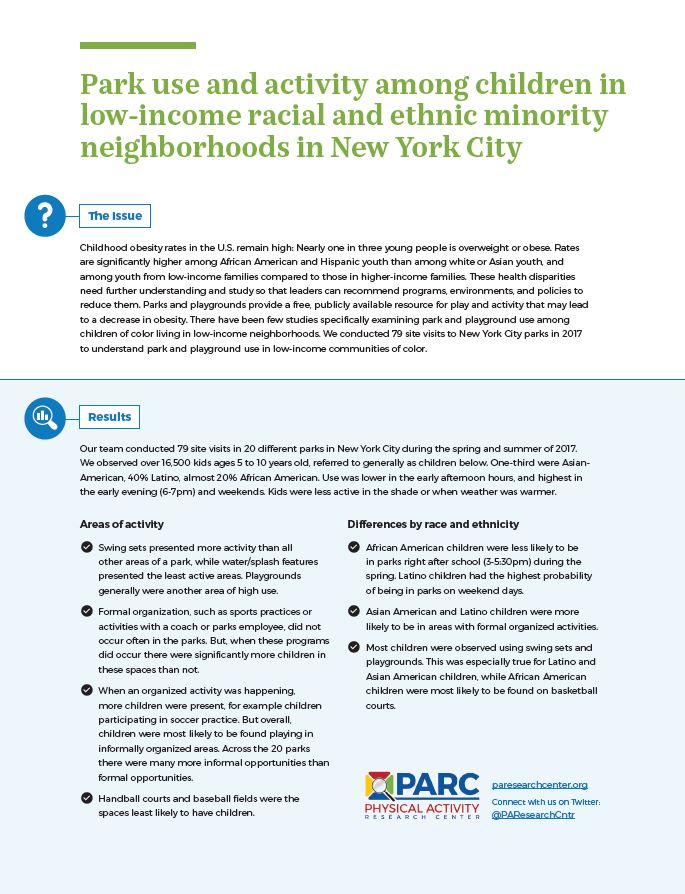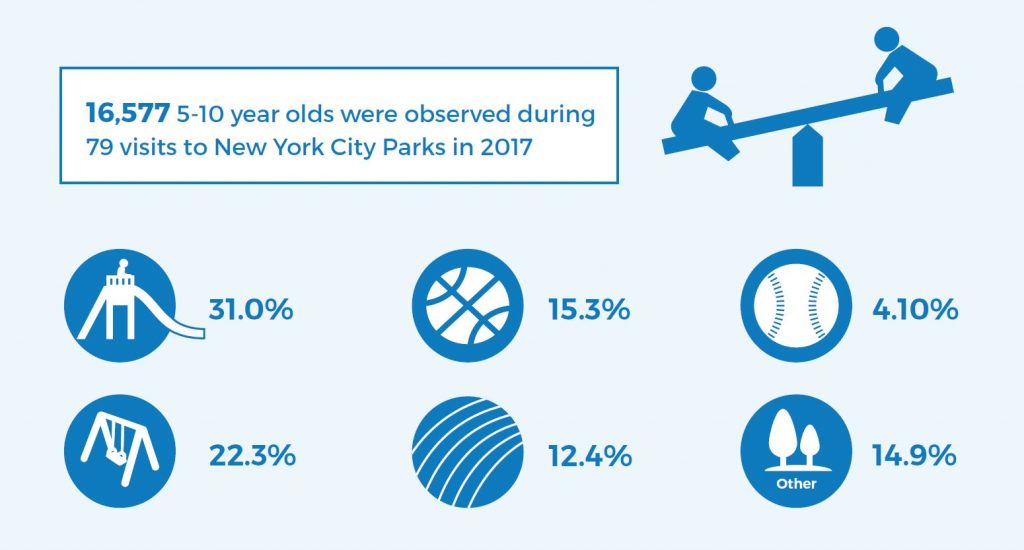Park use and activity among children in low-income racial and ethnic minority neighborhoods in New York City
By: Aaron Hipp, Claudia Alberico, Jing-Huei Huang, Elizabeth Mazak, and Myron F. Floyd from NC State University; and Dustin Fry and Gina S. Lovasi from Drexel University
Childhood obesity rates in the U.S. remain high: Nearly one in three young people is overweight or obese. Rates are significantly higher among African American and Hispanic youth than among white or Asian youth, and among youth from low-income families compared to those in higher-income families. These health disparities need further understanding and study so that leaders can recommend programs, environments, and policies to reduce them. Parks and playgrounds provide a free, publicly available resource for play and activity that may lead to a decrease in obesity. There have been few studies specifically examining park and playground use among children of color living in low-income neighborhoods. We conducted 79 site visits to New York City parks in 2017 to understand park and playground use in low-income communities of color.
Results
Our team conducted 79 site visits in 20 different parks in New York City during the spring and summer of 2017. We observed over 16,500 kids ages 5 to 10 years old, referred to generally as children below. One-third were Asian-American, 40% Latino, almost 20% African American. Use was lower in the early afternoon hours, and highest in the early evening (6-7pm) and weekends. Kids were less active in the shade or when weather was warmer.
Areas of Activity
- Swing sets presented more activity than all other areas of a park, while water/splash features presented the least active areas. Playgrounds generally were another area of high use.
- Formal organization, such as sports practices or activities with a coach or parks employee, did not occur often in the parks. But, when these programs did occur there were significantly more children in these spaces than not.
- When an organized activity was happening, more children were present, for example children participating in soccer practice. But overall, children were most likely to be found playing in informally organized areas. Across the 20 parks there were many more informal opportunities than formal opportunities.
- Handball courts and baseball fields were the spaces least likely to have children.
Differences by race and ethnicity
- African American children were less likely to be in parks right after school (3-5:30 pm) during the spring. Latino children had the highest probability of being in parks on weekend days.
- Asian American and Latino children were more likely to be in areas with formal organized activities.
- Most children were observed using swing sets and playgrounds. This was especially true for Latino and Asian American children, while African American children were most likely to be found on basketball courts.
Findings from this lay summary are available in the full article, published in Urban Forestry & Urban Greening:
Marquet O, Hipp JA, Alberico C, Huang J-H, Fry D, Mazak E, et al. Park use preferences and physical activity among ethnic minority children in low-income neighborhoods in New York City. Urban Forestry & Urban Greening. 2019; 38: 346-353. https://doi.org/10.1016/j.ufug.2019.01.018.
Suggested Citation for Lay Summary:
Marquet O, Hipp JA, et al. Park Use and Activity among Children in Low-Income Racial and Ethnic Minority Neighborhoods in New York City. A Lay Summary. San Diego, CA: Physical Activity Research Center and Raleigh, NC: North Carolina State University; 2019. Available at: https://paresearchcenter.org/park-use-and-activity-among-children-in-low-income-racial-and-ethnic-minority-neighborhoods-in-new-york-city/.
This lay summary was made possible with funding from the Physical Activity Research Center. The research that generated the lay summary was led by Drs. Myron F. Floyd and J. Aaron Hipp from North Carolina State University.


